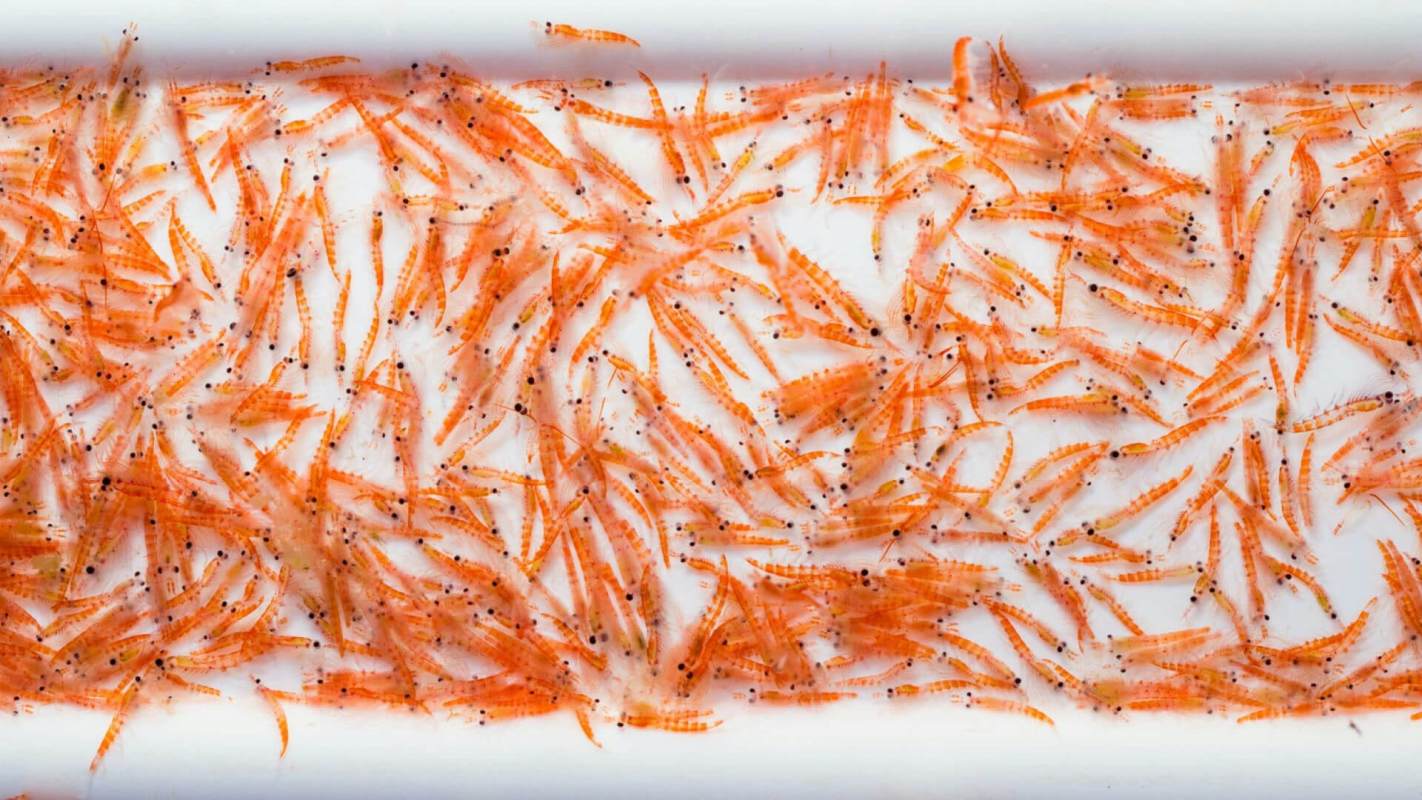Plastic pollution in the ocean is an ongoing issue, and even the tiniest of marine animals are at risk.
What happened?
According to a report by Sierra in June, two studies of the Southern Ocean near Antarctica revealed that Antarctic krill ingest "various types of microplastics, especially fibers from clothing and other textiles." This discovery spotlighted how even remote environments can be impacted by our plastic use.
"Even the polar environment is not free of microplastic pollution," Hangbiao Jin, an associate professor at the Zhejiang University of Technology and one of the study authors, wrote in an email to Sierra.
Jin is a member of a research team that collected and studied krill from two Antarctic regions, the South Shetland Islands and South Orkney Islands. The krill were scooped up from 26 sampling sites, and upon examining them, Jin and his colleagues found microplastics in krill from each site. The researchers published their findings in Science of the Total Environment and reported "a wide range of different types, sizes, and colors of plastic within the Antarctic krill," per Sierra.
A separate study published by scientists in Royal Society Open Science measured microplastics in both krill as well as jellyfish-like creatures called salps. While microplastics were found in both animals, the salps contained fewer but larger microplastic particles than the krill.
The studies reportedly uncovered a slew of microplastic fibers in particular, with each research team reporting that fibers accounted for more than three-quarters of all microplastic particles found. Plastic fibers are typically shed from clothing, curtains, carpets, and other textiles, with a single load of laundry capable of releasing over a million microplastic fibers.
"They are probably much more abundant than some of our other types of plastic that we're used to thinking about," said Amanda Dawson, an ecotoxicologist at the Commonwealth Scientific and Industrial Research Organisation in Australia who was not associated with either study.
Why is this important?
Though tiny, Antarctic krill are an essential part of the ocean's ecosystem. Commonly a meal for whales and other species, Antarctic krill "are one of the most abundant animals on the planet, with an estimated total mass of over 400 million tons," Sierra noted. That allows them to play a significant role in carbon sequestration, which mitigates climate change by trapping carbon deep underwater.
Plastic waste in the ocean is nothing new, as microplastics have been detected in hundreds of marine animals, including crustaceans, worms, fish, sea turtles, and seals. However, discovering plastic-ingesting animals in an isolated environment such as the Southern Ocean is particularly concerning.
Jin and his colleagues wrote that compared to other regions, the Antarctic is "a relatively clean area with very limited influence by human activities." The fact that plastic pollution is still prevalent in polar regions suggests that microplastics are pervasive and can travel vast distances through the atmosphere and ocean currents, potentially reaching both poles.
"For a long time, there was the assumption that perhaps Antarctica is protected because there is a very strong current surrounding the continent," said Emily Rowlands, a marine ecologist at the British Antarctic Survey and co-author of the study. "But rather than it being all local sources, it's most likely that there are some long-range sources as well."
What can be done about this?
After making this discovery, Jin's research team plans to study plastic toxicity in marine animals. The next step after that will be to examine "how plastics move through the Antarctic food web from tiny animals like krill to larger ones like fishes, penguins, and seals," per Sierra.
You can reduce your contributions to plastic pollution by reducing your use of single-use plastics and supporting cleanup efforts. Even in regions such as the Antarctic, every small change can contribute to a healthier ocean and a safer environment for all its inhabitants.
"There is a connection between what we do in our own daily lives and even the most isolated regions of the world," Rowlands said.
Join our free newsletter for weekly updates on the coolest innovations improving our lives and saving our planet.









